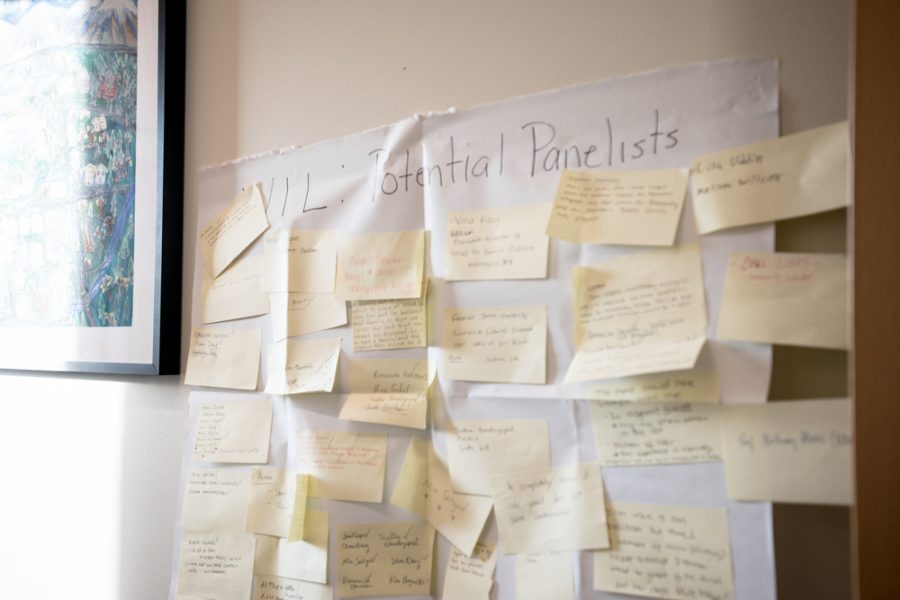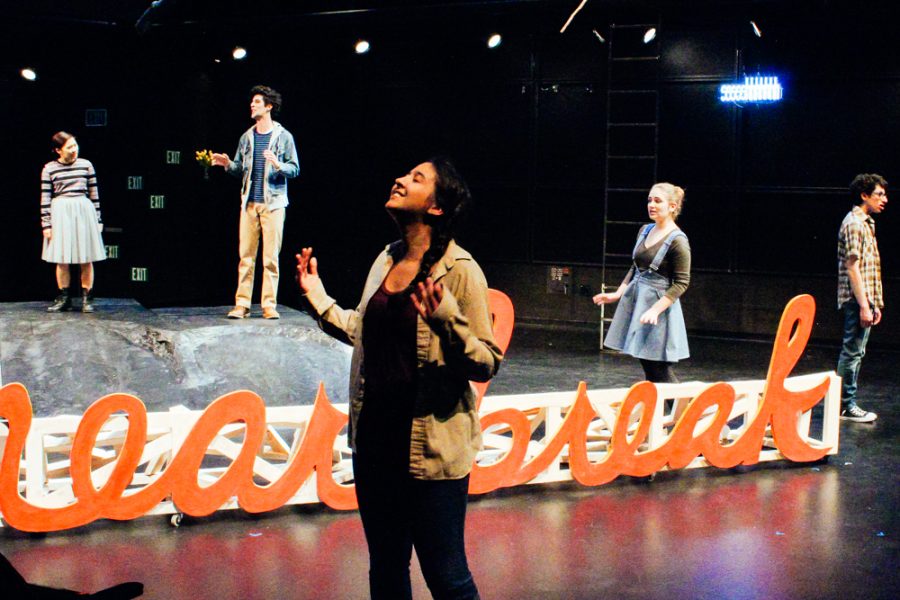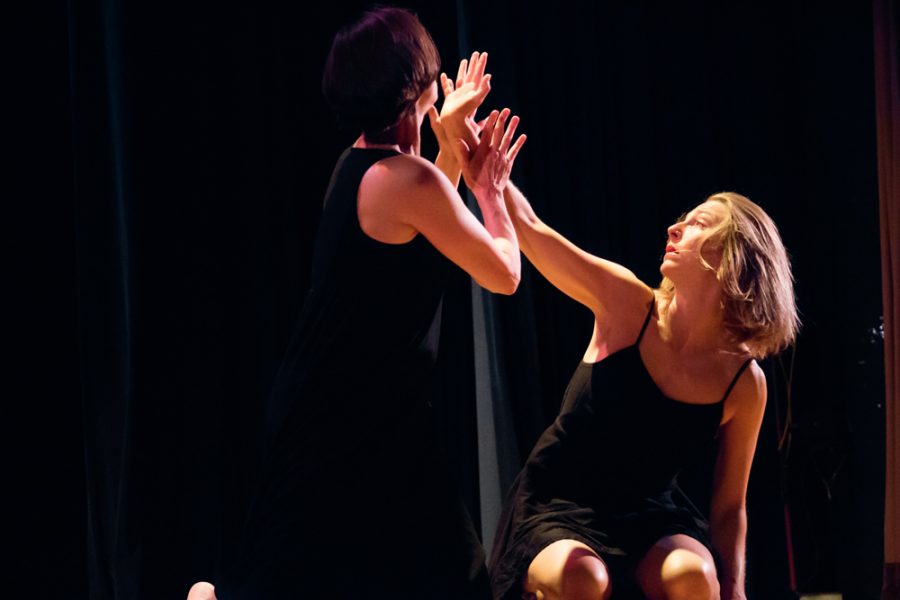Diversity is not just an important value here at Whitman, but also in Walla Walla, where October is Freedom From Discrimination Month. During October, the Walla Walla Valley Diversity Coalition puts on several events related to race and diversity. Some years, guests like Martin Luther King Jr.’s daughter and Ghandi’s grandson have been brought to speak.
This year, the main event was the “Who Are We Now? Questions of Race” panel on Wednesday Oct. 6 in the Reid Campus Center Ballroom.
The panel featured three distinct perspectives on the topic of race. Associate Professor of Biology Delbert Hutchinson provided the biological perspective and Linda Clark, information services specialist for the U.S. Census Bureau, talked about the history of race as a category on the census. Steve Rubin, a retired Whitman psychology professor and president of the Walla Walla Valley Diversity Coalition, presented the sociological and psychological perspective, filling in for an ill Professor Austin Archer of Walla Walla University.
The presentation began by showing a clip from the documentary “The Human Family Tree –– A Migratory History of the Human Race,” which is about the Genographic project by National Geographic. The five-year project gathered DNA from people all over the world and managed to trace the geographical origin of human genes back thousands of years to Africa. It was only about 60,000 years ago that humans began to migrate to other continents, only 2,000 generations, or a blink of the biological eye.
Hutchinson picked up the topic of the biology of race from there. He talked about how the study of genetics is relatively new, and in the beginning it was used to support the culturally accepted theory that human races were distinct sub-species.
However, now biologists are united in the idea that humans are all one species.
“I wouldn’t go so far as to say there is no such thing as race, especially in a social, political or cultural context,” Hutchison said. “But from a biological perspective it is better to think of geographic variants.”
To demonstrate the relative variation in humans, Hutchinson used the example of wolves, coyotes and dogs, which can all freely interbreed, yet all are distinct species. Humans are nowhere near as genetically different as these species, and not at all close to becoming so.
Truly, the greatest differentiation between human races comes from how far away populations had to migrate from Africa. Despite external appearances, someone from Europe is closer genetically to someone from Asia than someone from Africa is to an Australian aboriginal.
From the biological perspective, the talk moved on to sociology and psychology. Rubin talked about how appearance has historically been the most important factor in determining race and for organizing and subdividing race categories–from the time of European explorers to the time of Charles Darwin and the age of classification.
It was also a time when many quantifying tests were developed. Measures such as IQ tests began to be used to make sweeping generalizations about people, and races in particular.
Many sociologists attempted to prove that the difference between criminals and non-criminals was biological.
“It’s like blaming guns for the existence of crime,” Rubin said.
This kind of pseudoscience was used throughout history as a way to quantify reasons for discrimination, especially in the use of eugenics, which is a way of controlling populations by forced sterilization. This is a tactic that the Nazis employed in attempts to create a master race.
“Just because we learn something doesn’t necessarily mean it’s used well,” Rubin said.
Following this was Clark’s presentation on the history of race as a census question. Since 1790, it has been addressed on the survey, but every decade the questions have changed. In the beginning, the questions revolved around the head of the household, how many free white males there were and how many slaves were owned. From this, various racial categories were added, and 2000 was the first year that more than one race could be selected as an answer.
The information gathered by the census is used for a variety of purposes, such as to identify inequalities and disparities in health and education programs, and evaluate livability of neighborhoods.
There are many questions about the reliability of census data. On his 2010 census, President Obama marked “black,” yet he is mixed-race. One theory as to why he and other racial groups such as Native American tribes do this is to not dilute their identity and representation in the census.
This brought up many questions about the subjectivity of race. To accommodate, there are some proposed census questions for next decade that deal more directly with personal identification.
When asked by an audience member about whether or not we are moving towards homogeny, or a more colorblind view, there were several perspectives.
“You never hear the term melting pot anymore,” Clark said, adding that she’s heard the term ‘mixed salad’ lately.
From a biological perspective, Hutchinson thinks that even after another thousand years, there will only be slightly more mixing of race. He believes cultural traditions of same-race mating will continue, and ethnic and geographic diversity will be retained.
The panel ended, leaving the audience curious about the topic. Many of the audience members stayed after to ask more questions and discuss among themselves.
“I’m very interested in the question of race,” said Malinda Pankl, ’67, who attended the panel. “I wanted to understand how complex race is. I also had never noticed or thought about how the census questions change.”
There are two other diversity coalition events coming up this month. One is a screening of the “The Human Family Tree –– A Migratory History of the Human Race” documentary. This will be shown Wednesday, Oct. 27 at 7 p.m. in the Fine Arts Auditorium at Walla Walla University.
The other is the Identity Project. At the lecture, Annie Capestani, the diversity coalition treasurer, was taking pictures of people, and letting them write their own identity labels, instead of labels imposed by society. The coalition has also been taking pictures at the Farmers’ Market the past few weekends.
The project was inspired by a similar project that Whitman did earlier this year, which can be seen at the Glover Alston Center.
Photos from the identity project can be found at the Walla Walla Public Library from Oct. 9-30. The last photos for the project will be taken on Saturday, Oct. 9 from 2-4 p.m.









